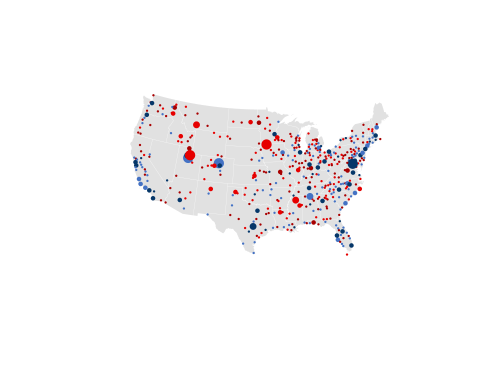International Women’s Day is this week, and millions around the world are mobilizing to celebrate womanhood and promote women’s rights. Unfortunately, there’s perhaps less to celebrate for women in the venture capital industry and the high-growth startups it supports. In 2017, just 16 percent of venture capital funding in the United States went to startups with at least one female founder, and only 2.5 percent went to companies with all female founders. [1] An estimated 9 percent of general partners (the people making investment decisions) at leading U.S. venture capital firms are women.
Compare those numbers to female representation in the workforce (47 percent), business ownership (36 percent), high-tech industry employment (30 percent), or as alumni of the relatively small number of feeder institutions (particular universities, degree programs, or corporations) that tend to dominate the sector (various percentages). [2] It quickly becomes clear that particular barriers exist for women in entrepreneurship in addition to those they already face in related fields. All is definitely not well.
And yet, when one looks beyond these headline numbers, there are reasons for optimism. That’s a key message from a new report I authored for the Center for American Entrepreneurship last month, titled The Ascent of Women-Founded Venture-Backed Startups in the United States.
The report analyzes patterns of venture-backed startup activity between 2005 and 2017 with a focus on the gender composition of founding teams. Instead of looking at topline aggregates of venture deals and funding, as others have done, I focused on the number of companies raising a first round of venture capital. I took this approach for two reasons. First, it allowed me to assess the flow of new companies entering the venture-backed pipeline each year—those closest to “starting up.” Second, by grouping startups into cohorts along a common dimension—in this case, companies raising a “first financing” during the same year—I was able to track performance over time in a meaningful way.
Figure 1 demonstrates the annual number of startups raising a first round of venture capital (bars), segmented by whether companies have at least one identifiable female founder or no female founders (bar colors). The line demonstrates the female-founded share of these companies overall. Startups with at least one identifiable female founder are considered “female-founded”; all others are “non-female-founded.”

Three insights emerge. First, the number of female-founded venture-backed startups has increased dramatically over time—from 1,036 in 2005 to a peak of 3,490 in 2014, before tailing off to 2,704 in 2017. Second, at 16 percent of first financings over the thirteen-year period, female-founded companies are underrepresented—particularly when compared to the other areas of the economy discussed earlier. Third, the female-founded share of startups is growing—from 7 percent in 2005 to 21 percent in 2017.
However, since this blog is primarily concerned with geography, the remainder of the post will focus on the distribution of female-founded startups across metropolitan areas. To simplify, I’ll look only at the top 50 cities in terms of first financings between 2005 and 2017. These cities accounted for 90 percent of startup activity over the period.
The maps here illustrate the number of first financings over the thirteen-year period (dot size) as well as the female-founded share (colors) of such financings. The cities with the highest portions of female-founded startups (darkest colors) among their ranks include Ann Arbor, Mich., Milwaukee, New York, Portland, Ore., and Las Vegas. The bottom of the rankings (lightest colors) includes Provo, Utah, Orlando, Fla., Minneapolis, Nashville, Tenn., and Atlanta.


Notably, the San Jose metropolitan area—which is most associated with Silicon Valley—is well below the national average (12 percent compared with 16 percent). It is the only metropolitan area among the five most active (the others being San Francisco, New York, Los Angeles, and Boston) that was not above-average compared to the nation.
Next, we’ll look at the data for just the latest two years—2016 and 2017. The rankings are shuffled up a bit, but the spread is also much wider. For example, 58 percent of Ann Arbor’s startups in the last two cohorts were female-founded, compared with 21 percent for the entire country. Likewise, Memphis, Tenn., Boulder, Colo., and Milwaukee were at or above 40 percent over those two years. Among the bottom here were San Antonio, Atlanta, Orlando, Bridgeport, Conn., and Salt Lake City.


So, what might explain some of the regional variation in the gender diversity of startup founders? There is surprisingly little research on the subject, but a working paper by Paul Gompers and Sophie Wang of Harvard suggests that “cultural and social” factors might play a role, such as religious affiliation, political leanings, and whether states had friendly policies for parental leave.
I found similar evidence with some exploratory analysis I conducted outside of the report. For example, I found a significant and positive correlation between a metro area’s share of venture-backed startups being founded by women and its vote share going to Hillary Clinton in the 2016 presidential election. This was true even among the top 50 or 100 metros (which are disproportionately Clinton-voting geographies) and after controlling for a number of factors that are highly correlated with venture-backed startup formation. [3]
Additionally, I found that metro areas experiencing the highest rates of growth in startup activity over the thirteen-year period also had, on average, a higher share of female-founded companies among them. This effect was strongest among the most active (largest) cities for startup activity. This may suggest that faster growing regions, large and small, are either less saddled by the legacy of male dominated venture capital and segments of the information technology sector, or that growth is increasingly being driven by cities that are more welcome to female founders.
Clearly, it is still early days for an established evidence-base in this area and warrants further research exploration.
Download the Appendix table for metropolitan area data.
Endnotes
1. PitchBook analysis of PitchBook data, provided to the author.
2. For specific figures, see Bureau of Labor Statistics, Labor Force Statistics from the Current Population Survey; and U.S. Census Bureau, Annual Survey of Entrepreneurs. For information on feeder institutions and programs, see Gompers and Wang (2017), “Diversity in Innovation,” National Bureau of Economic Research. For a summary of research, see DuBow and Pruitt (2017), “The Comprehensive Case for Investing More VC Money in Women-Led Startups,” Harvard Business Review.
3. Such as share of bachelor’s degree holders in a city’s workforce or patents per capita.
Ian Hathaway is Research Director at the Center for American Entrepreneurship (CAE), which released the study The Ascent of Women-Founded Venture-Backed Startups in the United States on February 19. The study was sponsored by CAE and the National Council for Women & Information Technology.







Commentary
Which cities lead the nation for women founding venture-backed startups?
March 7, 2019